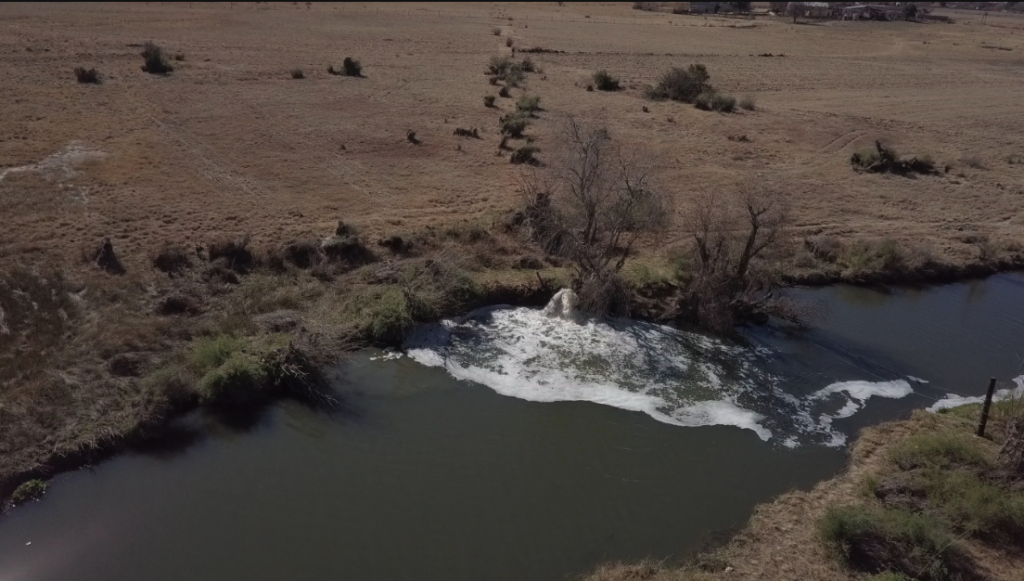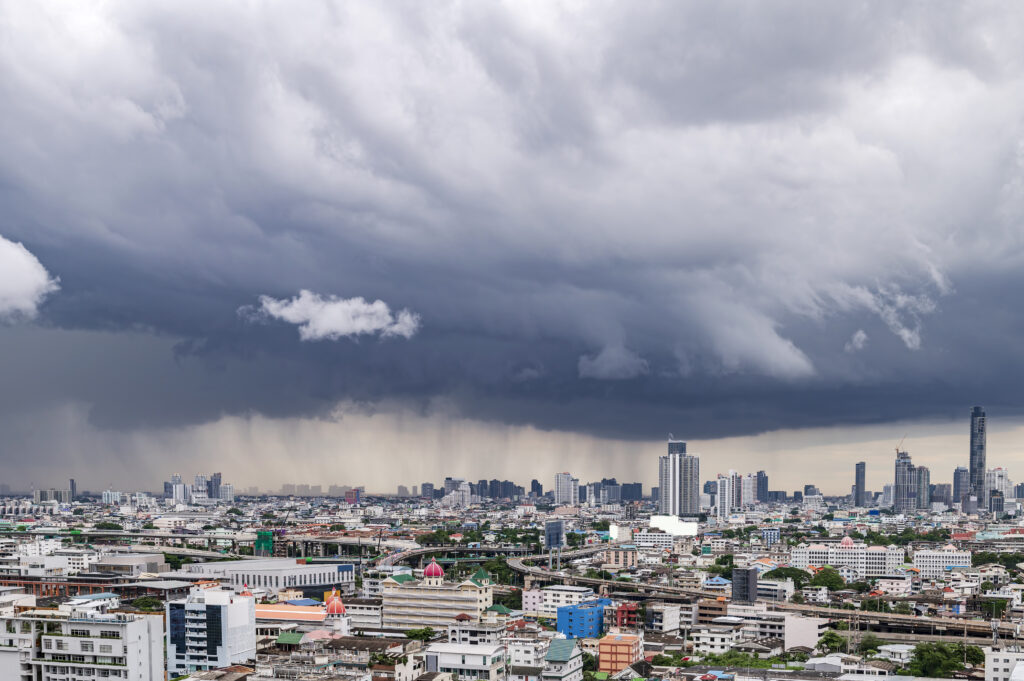- Climate change is to public health today what Aids was 30 years ago, experts say — and it could put a spanner in the works for ending Aids as a public health threat by 2030.
- But the links between changing weather patterns and poor health are complicated, which makes them hard to understand.
- This shouldn’t paralyse us, writes Yogan Pillay in an op-ed. We just need to start somewhere. Here are his thoughts on what lessons we can take from responding to HIV to tackle the health effects of climate change.
Linda Pretorius connects the dots between HIV and climate change in this newsletter. Sign up.

COMMENT
Thirty years ago public health prophets warned that HIV was a health crisis in the making. Outside of the scientific community, people were talking about how the virus will affect our wellbeing for about a decade — and not doing much else. In 2004, about 2-million people died of Aids — a set of illnesses that develop when someone with HIV doesn’t take medicine and the virus weakens their immune system so badly that they can’t fight other infections anymore, and die.
During the late 1990s and early 2000s, South African politicians’ denial of HIV causing Aids meant, according to a Harvard study, that about 330 000 people unnecessarily lost their lives because they were blocked from getting lifesaving antiretroviral treatment.
Now the world is at a similar rubicon again — except this time around, the reason is much more insidious than a single cause-and-effect infection from an immune-eroding virus that would lead to millions of deaths worldwide.
By 2022, about 39-million people were infected with HIV. Yet because of scientists’ continued efforts to develop treatment and preventive medicines and pressure from civil society to get these interventions to the people who need them the most, new HIV infections have dropped by 59% in 2022 from the peak in 1995. With just over a quarter of all people with the virus on antiretrovirals, the number of people dying from Aids-related illnesses in 2022 had fallen to around 630 000, about half of the 1.3-million in 2010.
From these statistics, it may sound like the world is well on the way to reaching its goals of ending Aids as a public health threat by 2030.
But changing climate conditions could make this an unrealistic aim.
Hard hits
The effects of climate change will be worse in Africa than on continents with high-income countries; just as with HIV, it will play out in a world ravaged by inequality. Almost two-thirds of infections are in sub-Saharan Africa and according to the World Bank, 42 countries in this region will be among those hardest hit by the effects of changing weather conditions.
The overlap is not unexpected. In fact, experts call Aids and climate change syndemics — two epidemics that occur at the same time and of which the effects compound the pressure on health systems and our response to diseases.
The bleak outlook for ending HIV in low-income countries in the face of the climate crisis is not down to a single cause. Instead an intertwined mix of crumbling health systems, environmental pressures such as extreme weather events and social factors like poverty, food insecurity and migration mean diseases — both infectious and noncommunicable ones — get a stronger foothold and people become more susceptible to becoming sick. It’s a cauldron of ill health that’s ready to bubble over.
For example, in February, tropical cyclone Freddy caused widespread devastation in Malawi and Mozambique and affected close to 2-million people, experts say, whether through having lost their homes, infrastructure like roads, sewage systems and clinics being damaged or crop fields being sodden. In poor countries, like in Africa, governments are often ill placed to rebuild after damage like this, which, in turn, impacts people’s access to getting tested or treated for HIV.
Models show that a rise of 1.5–2°C in the planet’s temperature — which the United Nations expects to hit before 2050 if the world doesn’t manage to cut the amount of greenhouse gases going into the air dramatically by 2030 — will lead to food production in Africa dropping substantially because of droughts, floods and shifting rainfall patterns. (Greenhouse gases, such as carbon dioxide and methane, trap heat in the Earth’s atmosphere and so add to global warming.)
Not being able to grow enough food because of changing climate conditions, will drive up HIV infections, experts say, because people’s livelihoods and ability to earn an income will become threatened — often leading to more people relying on transactional sex to put food on the table. In fact, a 2015 analysis published in The Economic Journal has shown that in rural areas of Africa, where households depend largely on small-scale farming for food and money, HIV infection rates jump by 11% every time there’s a drought.
Yet the sheer complexity of the relationships between these things seems to paralyse us. Talking about climate change affecting everything, makes it a nothing thing, because it’s not specific enough.
So what do we need to do to get into action — and what lessons can we learn from how we dealt with HIV?
First things first
First is the need to untangle the relationships systematically. We must first understand what the more direct links are between climate change and a health outcome, such as HIV infection, and only then start looking at the connections that are more removed.
For a coordinated and workable approach, these links must be written into policies. But policies mean nothing if they’re not centred on people and prepared in a way that communities who are most vulnerable and so will bear the biggest brunt of changing weather patterns — women, people in rural areas and the poor — will understand how their health will be affected.
It’s a difficult ask for a government’s decision-makers, though, because it’s not just one department who has to come up with plans. When you’re working in a national department, the first priority is to look for direct relationships, rather than the more subtle ones, because those are the things that can yield change fairly fast.
For example, during South Africa’s early response to HIV (once treatment had become available in the public sector), the health department was very focused on getting people tested and onto treatment as quickly as possible, and to buy the right drugs at a good price. We weren’t looking too far ahead or thinking about things outside the health system.
Is it a mistake not to think about the bigger picture? Yes. But is it wrong for a country’s health department to be looking at quick wins first? No — because we can only move forward if we’ve understood the issue from the bottom up.
Learning from the past
For this, we need the right monitoring systems in place so that we have good data to base decisions on. So, we need to figure out not only what indicators we need to track, but also what systems we need to get us reliable information. That can only be done when we have a better understanding of the routes along which climate change affects health, and which pathways are direct and which are further away.
This is not the task only of the government — it will require researchers, civil society and funders to all work together to think through the pathways clearly and then develop tracking systems to get us reliable data that will show us where we need to act and whether what we’re doing is working.
It will take time to get the information systems right. But what we can do now already is to improve people’s understanding and awareness of what we know about climate change and its impact on health — and that’s something we’re not doing nearly well enough.
Several years ago, the health department had, for example, developed a plan to deal with the consequences of climate change. But if documents like these aren’t widely shared and explained to people who will be impacted most, they’re of little value. Communities need to know not only what the plans are but also what their role is in getting things done. If we don’t have this, we will be worse off.
We need to figure out how to take what we already know into communities but in ways that people don’t only understand but can also do something practical with. We can learn so much from the treatment literacy campaigns that grassroots organisations such as the Treatment Action Campaign designed and implemented in the early to mid-2000s. Trained peer counsellors made ARVs, the causes of HIV and how to prevent infection easy to understand, and worked closely with government clinics and hospitals.
As a result of an exceptionally strong civil society response with clear communication, there was a ripple effect and the news media, for example, also played an important role in conveying — and breaking down — crucial information.
We don’t yet have the kind of community activism for climate change as we had for HIV. Yet the changing weather patterns will affect our response to HIV, tuberculosis, diabetes, nutrition, poverty, how people live — all those hidden links between climate change and health, which we don’t yet fully understand.
But we need to start somewhere — because there is no plan(et) B.
Yogan Pillay is the director for HIV and TB delivery at the Bill & Melinda Gates Foundation (BMGF). Prior to this he was the South Africa country director of the Clinton Health Access Initiative before which he spent more than 20 years in the national health department in various management positions. Pillay spoke at Bhekisisa’s 10th anniversary event on the impact of climate change on health. Watch the panel discussion. Bhekisisa receives funding from the BMGF, but is editorially independent. Read more about the nature of our donor relationships.
Yogan Pillay is the director for HIV and TB delivery at the Bill & Melinda Gates Foundation. Prior to this he was the South Africa country director of the Clinton Health Access Initiative before which he spent more than 20 years in the national health department in various management positions.









